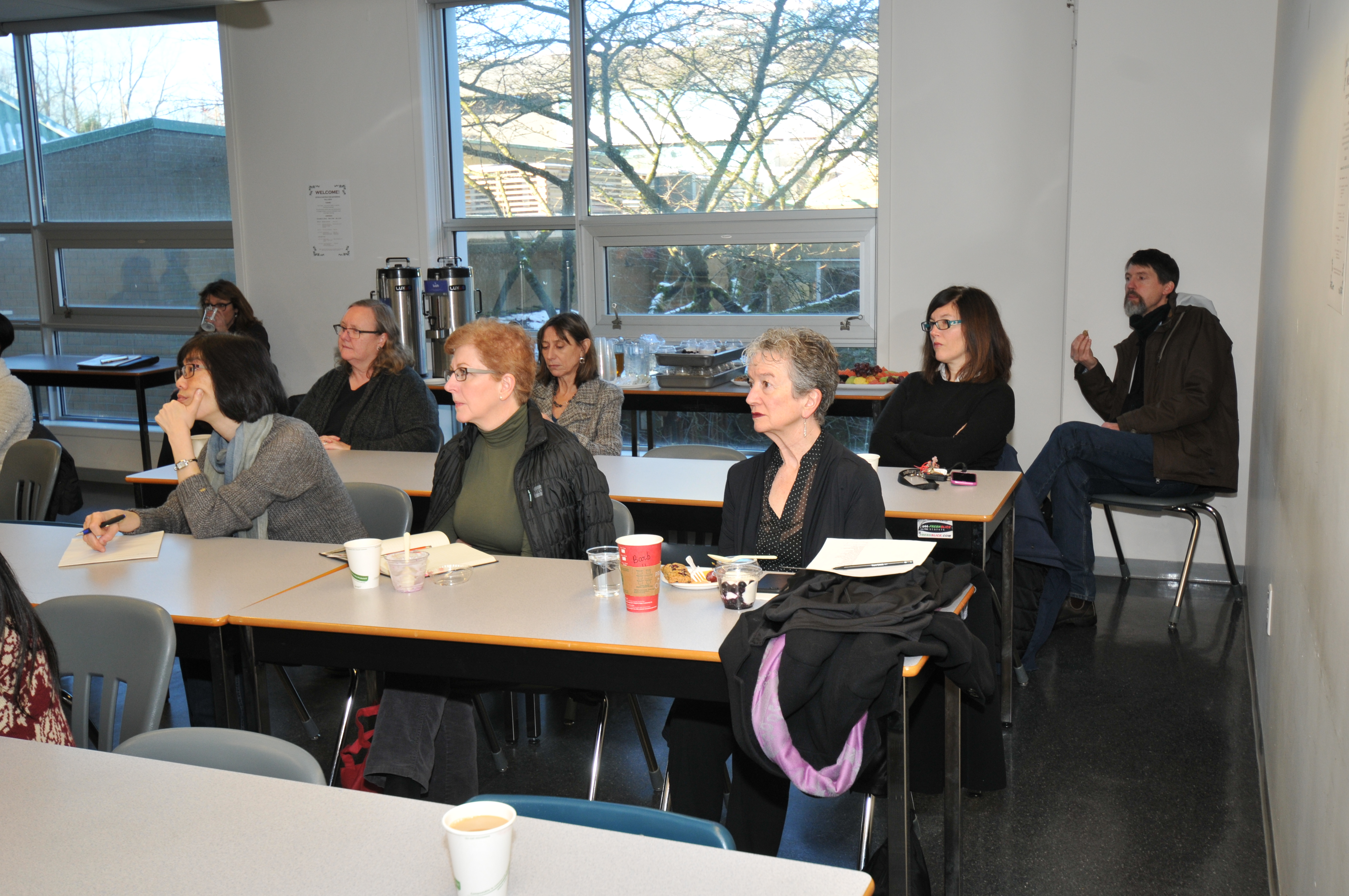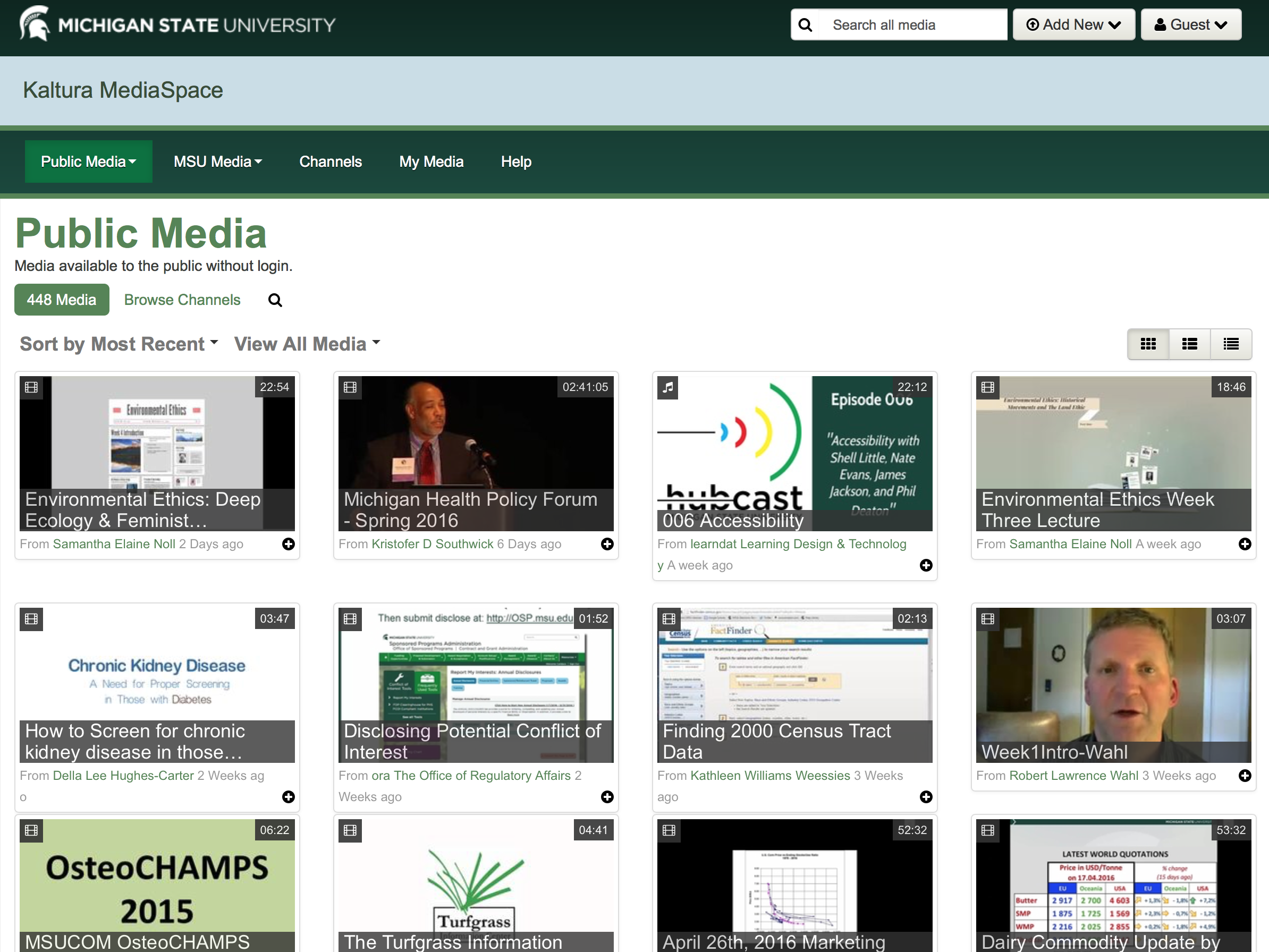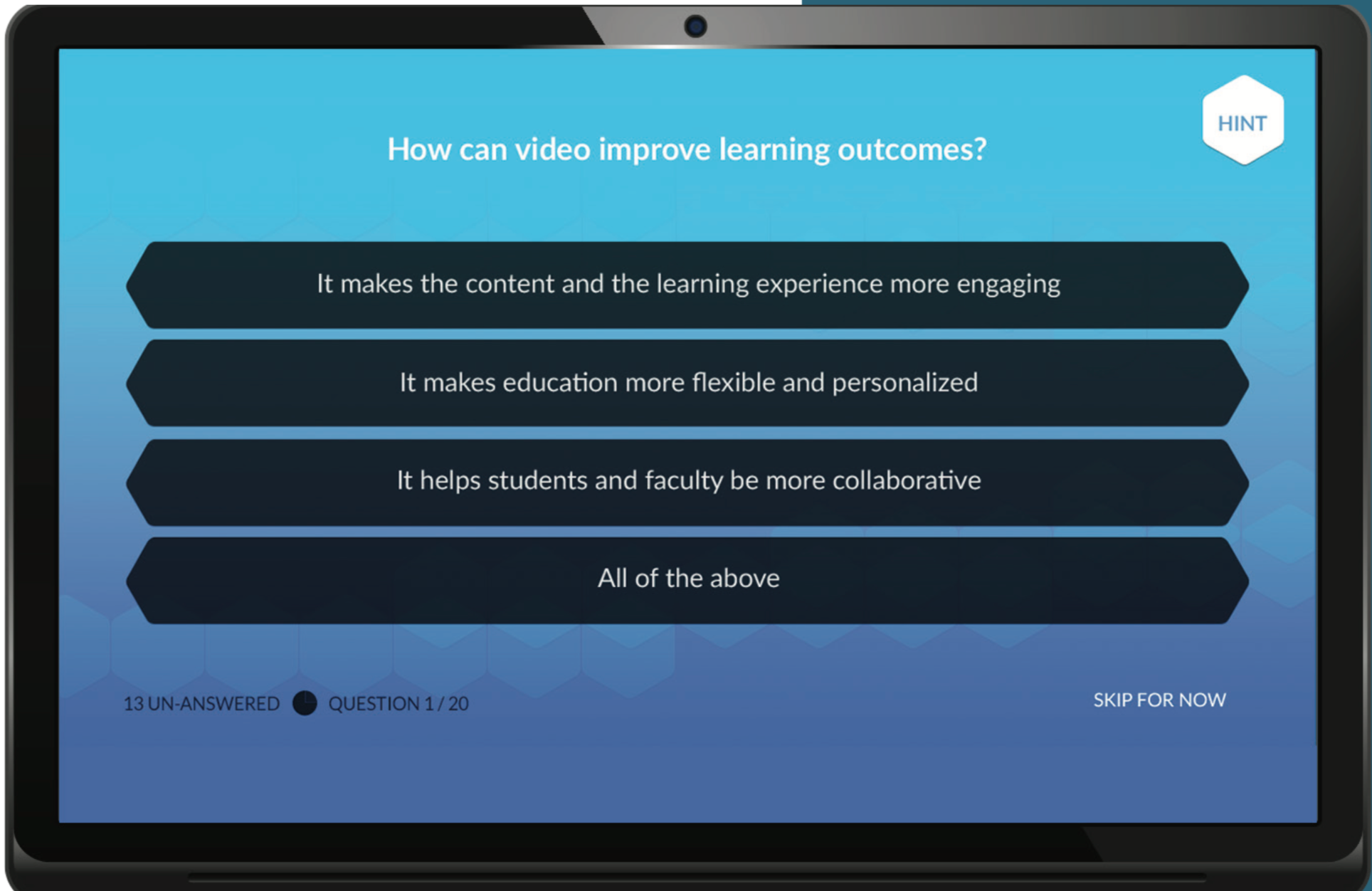Nice short animated video on the students of the future and how we can support them.
Tag: Video
The EdTech Instructor Gathering (December 2016)
Extending the Shelf-Life of Your Instructional Videos: Six Common Pitfalls to Avoid
“When instructional video is produced thoughtfully and used to promote active engagement, it can improve student motivation, learning, and performance, make content more memorable, and bring highly visual material to life.” However, a number of small mistakes can shorten the shelf-life of your video, limit its reusability, and force you to re-record sooner than you’d like. Here’s an article with practical tips for extending the shelf-life of your course videos.
Read more: Extending the Shelf-Life of Your Instructional Videos: Six Common Pitfalls to Avoid
Using Pressbooks to create open course materials
Pressbooks is free online publishing software derived from Wordpress that you can use to create open educational content. While primarily a tool for creating open textbooks Pressbooks can be used for other purposes such as authoring support documentation, course guides or supplementary course materials in D2L/Brightspace or iWeb.
One of the advantages of Pressbooks is that it is very easy to use and it can output accessible content in a wide range of file formats. These include ePub (iBooks, Nook, Kobo etc.), PDF (for print/digital distribution), Mobi (Kindle) and the Open Document format. This means that students can easily read content on their mobile devices and there is an option for a web version of every book for reading in a browser.
The process of creating the book is straightforward and Pressbooks includes a number of templates to give your finished content a professional look. You can import from Microsoft Word or WordPress and the wizard-like interface includes colour-coded placeholders for things like learning objectives, exercises and key take-aways. As well as text you can easily add images, audio and embed video from sites like YouTube.
Pressbooks makes it easy to collaboratively author your content with colleagues, although only one person can work on a book at any one time. You can release the book under different licenses ranging from all rights reserved to public domain. BCcampus recommend using a CC BY (attribution) license if you would like to support open and accessible content and enable others to adapt your book.
To get started using Pressbooks Langara Faculty can sign up for an account using their Langara email address (note: must be in the format @langara.bc.ca). BCcampus will be hosting a training webinar on using Pressbooks on Tuesday January 24, 10 am. For more information on using Pressbooks talk to Julian Prior (Ed Tech) or Lindsay Tripp (Copyright Librarian).
D2L Updates
Welcome back to a new semester. D2L has made some changes to the names of tools and added a My Media tool, as well as new features for the Grades, Groups, Quizzes and Discussions tools.
Tool name changes:
| Former Name | Updated Name |
| Dropbox | Assignments |
| News | Announcements |
| Pager | Instant Messages |
| Edit Course | Course Admin |
| In Content, New | Upload/Create |
| In Content, Add Existing Activities | Existing Activities |
If you refer to any of the tools within your course materials, you will need to update the language.
For example, if you have instructions in your course outline for students to submit assignments to “Dropbox,” you will need to edit it to read “Assignments tool.”
Do more with video: Four great features of the new Kaltura
Kaltura (Langara’s multimedia streaming platform) is about to be upgraded. As well as continuing to provide an easily accessible way for instructors and students to upload video and audio content to D2L courses, Kaltura is introducing a number of new features. Here we highlight four that we are excited about – and we hope you will be too.
1. Kaltura MediaSpace
It has always been possible to upload videos to Kaltura in D2L. However, instructors have been asking us for a while whether there is a more user-friendly and visually appealing way to search, watch, upload and share their videos. Kaltura MediaSpace will bring a YouTube-like video portal to Langara with granular user controls over the management of videos, screencasts, audio and other content, including student content. All data is stored in Canada on UBC’s servers and all content uploaded to MediaSpace is private by default.
2. Closed Captioning
The Canadian Association of the Deaf have long advocated for the high quality captioning of all video for accessibility purposes. Closed captions in Kaltura are not a new feature – they have been available for a while. The upgraded version enables all users to upload SRT and other closed caption files rather than have Ed Tech do this for you. We are also currently evaluating the use of external video captioning services that integrate with Kaltura.
3. CaptureSpace
At Langara ‘Video Screen Capture’ (i.e Screencasting) is very popular with instructors who use it for a variety of purposes – whether that be providing audio and visual feedback on papers to students in the LEAP program, assisting a flipped classroom model or creating software walk-throughs. Up to now we have recommended and supported instructors in the use of a tool called Screencast-o-matic that we subscribe to for creating video screen captures. The upgraded version of Kaltura brings a new application called CaptureSpace that will be available to download for Windows and Mac computers. CaptureSpace allows you to capture your screen, screen and webcam, webcam only or voice. It also integrates nicely with Microsoft Powerpoint so allows instructors (and students) to easily create slides with narration.
4. Interactive Video Quizzing
Have we saved the best until last? The interactive video quizzing feature in the new Kaltura enables the embedding of multi-choice questions at any point in a video. This is a great way to improve engagement, interactivity and assess understanding. This feature will be available later in the year.
For more information on the Kaltura upgrade please contact Julian, Heidi or Ari in Ed Tech (edtech@langara.ca).
NID Exploration Week? What’s that?
| EdTech in conjunction with TCDC and the Library has designed several fun, informative sessions to support your Non-instructional Duty time. Join us as we highlight a different teaching idea, app or program for you to consider when planning your next semester of teaching. Each session will offer new ideas and takeaways. Of course, you are welcome to attend if you are teaching as well!
EdTech sessions include: Office Mix for PowerPoint, Piazza, an App Jam, Incorporating Video and Images and Beyond PowerPoint. To learn more about and register for the EdTech sessions, please click here.
|
 |
Video and Multimedia in Education
| Back in 2008 the NMC/Educause Horizon Report stated “video is everywhere”1 in recognition of the transformative effects that the availability of relatively cheap and easy to use tools to edit and create video were having on teaching and learning. Fast forward seven years and we are continuing to witness the rapid growth of video and interactive multimedia in higher education as the success of platforms such as iTunes U, Khan Academy, Lynda.com and TEDx demonstrates. Our students—labelled by some the “Netflix generation” 2—are coming to Langara with heightened expectations of the role that multimedia should play in the learning lifecycle, from recruitment and course design to content delivery, assessment and feedback. They are equally aware that to succeed in the digital economy they need to demonstrate competence in using multimedia to communicate and collaborate effectively. Being digitally literate requires much more than simply being able to use a word processor or a spreadsheet programme.
This presents new challenges to instructors who perhaps are not always as comfortable as students are working with digital media. They may be understandably sceptical of the idea that binge-watching Netflix translates particularly well to the higher education environment where academic rigor, critical thinking and deep learning are prerequisites for student success. Even if instructors are convinced of the potential of video to enhance student engagement they may have questions about what makes for a compelling video, what the optimum length of a video should be, or how best to distribute it to their students. In my role as Educational Technology Advisor (Multimedia Specialist) I work with instructors to help answer these questions and assist them in developing the confidence to use, create and share multimedia in their teaching. Using multimedia effectively requires careful planning, an understanding of the importance of accessibility and an awareness of the myriad ways that it can support academic innovation. My job is to help instructors navigate through the potentially bewildering array of applications of multimedia to learning, whether that be screencasting, podcasting, video editing, audio feedback, digital storytelling or flipped learning. Our common aim is to stimulate the appetite of our students for engaging and meaningful learning by harnessing the potential of multimedia to improve learning outcomes. Julian Prior Educational Technology |
 |





